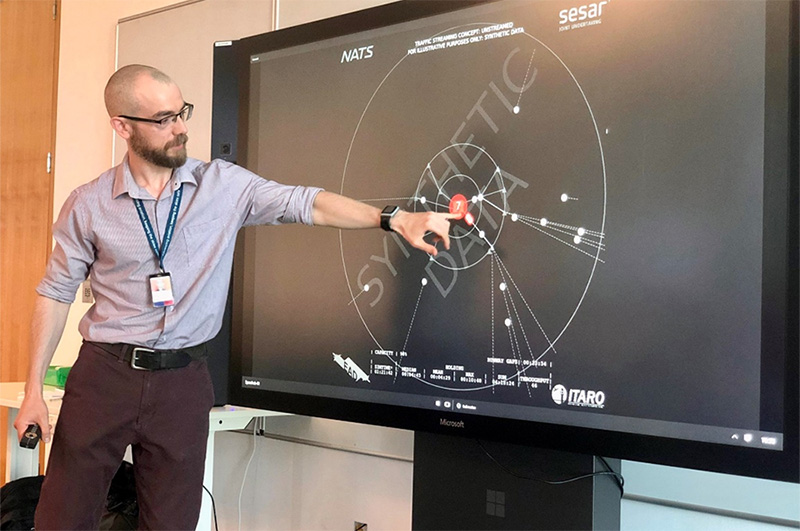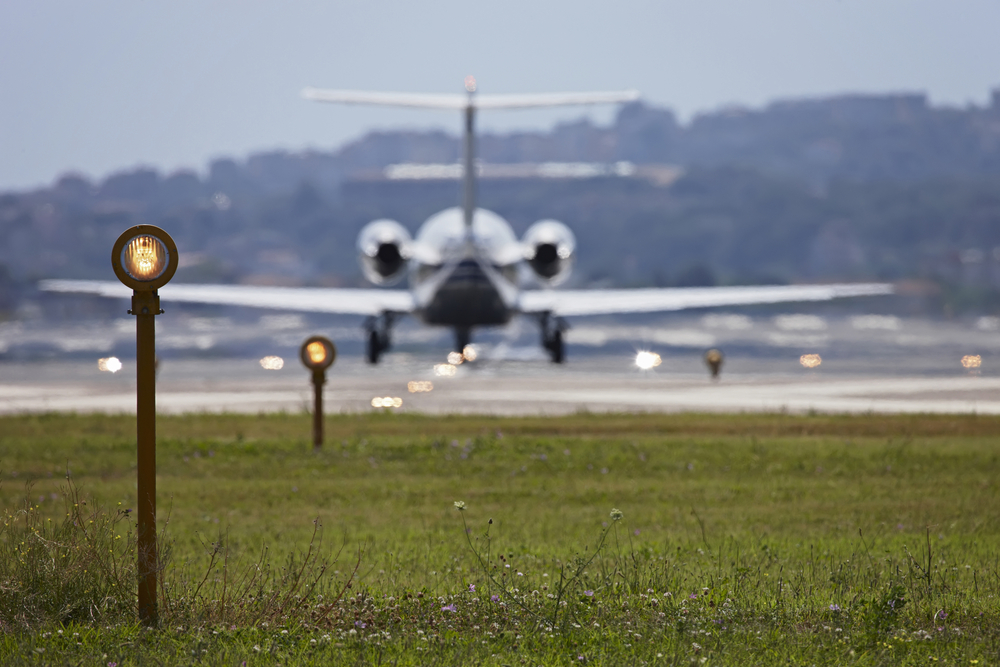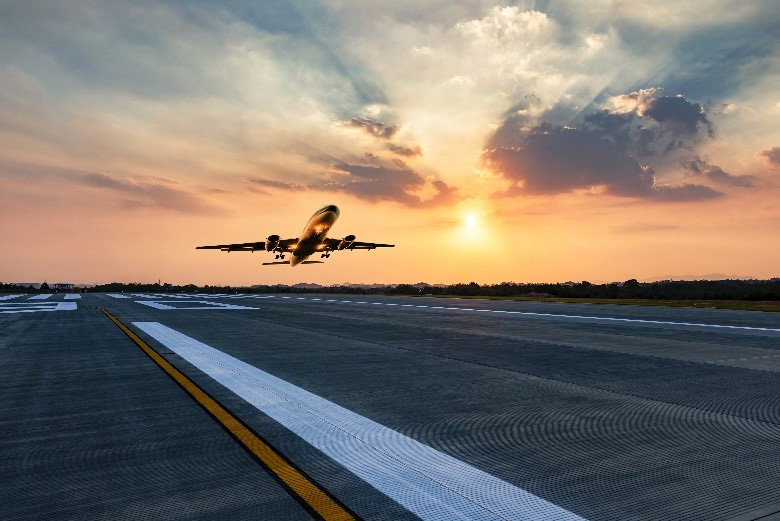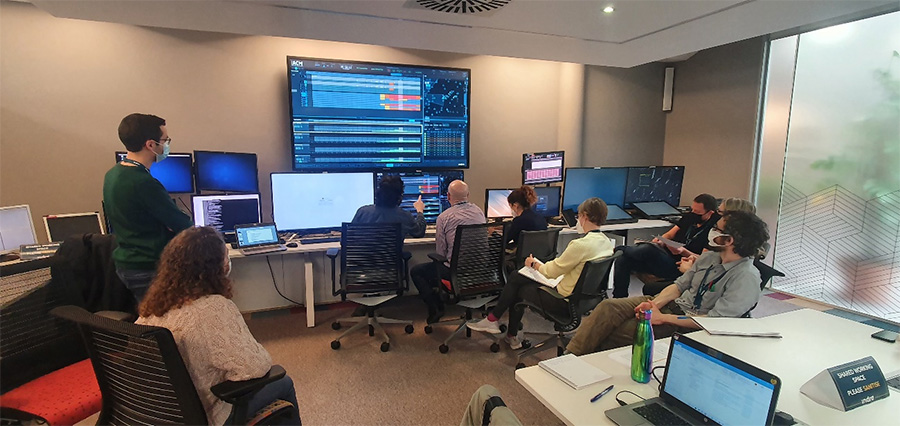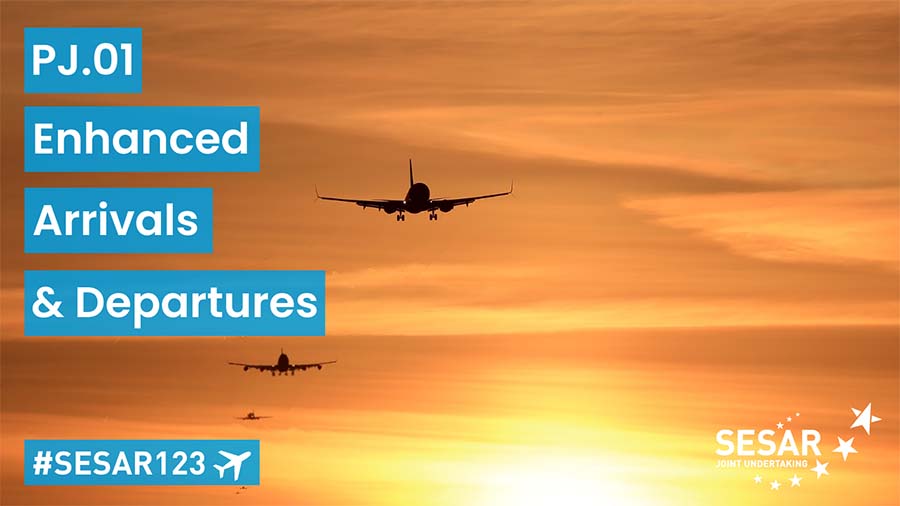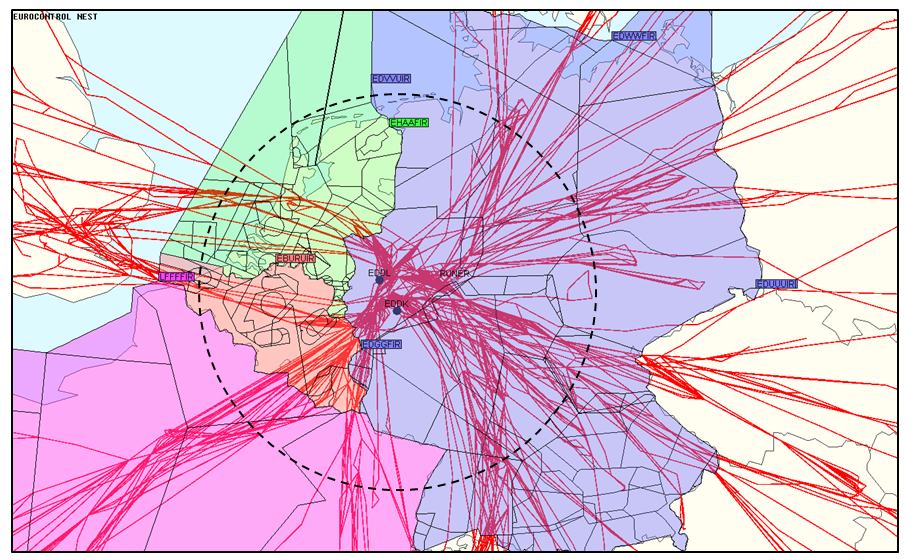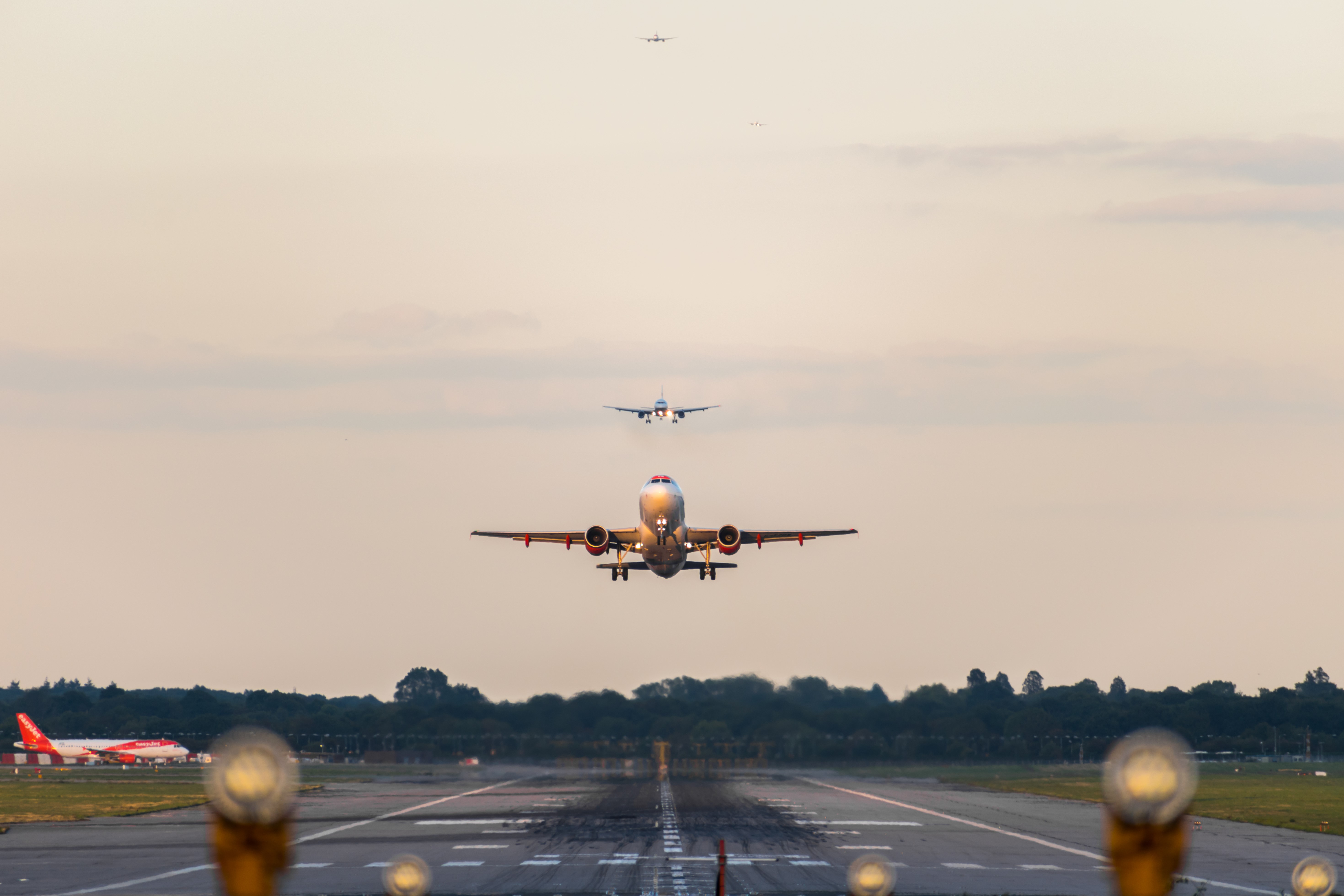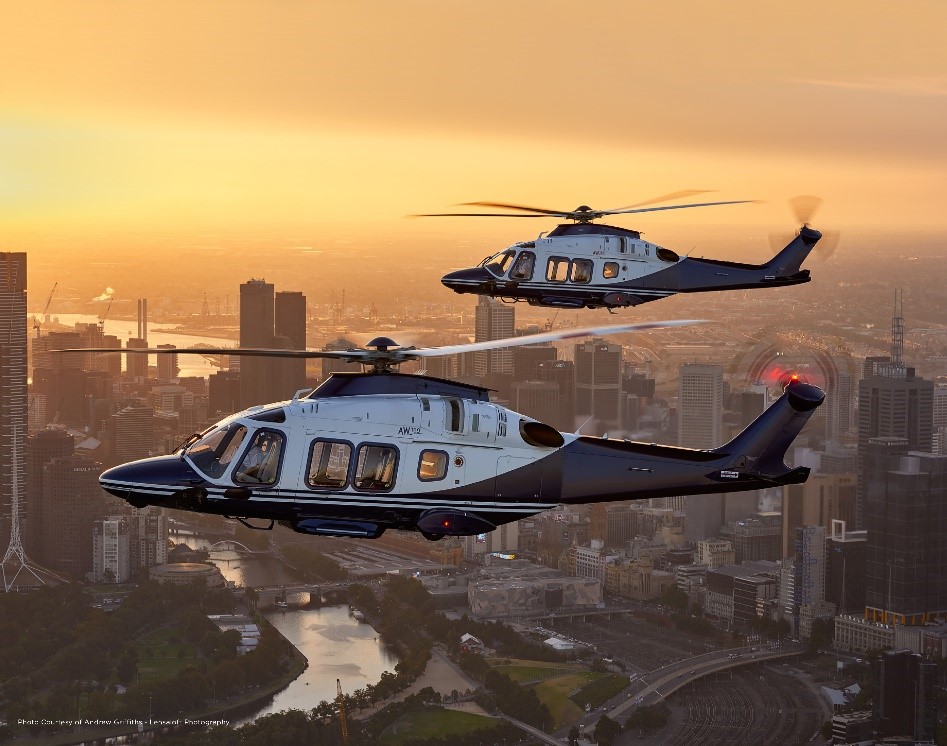The overall project is developing concepts, tools and procedures to ensure that terminal manoeuvring areas (TMAs) are managed in a more sustainable and fuel efficient manner whilst ensuring the capability to manage a future increase in capacity. This was achieved by taking advantage of the latest technological developments from both an airborne and a ground-system perspective and through the secure sharing of data.
The project focused on four solutions, as part of a second wave of activities:
Short-term DCB Optimisation of TMA and extended TMA airspace with TMA management tools: Refers to the development of concepts for the digital synchronisation of arrivals and departures in high density/complexity environments. Traffic in the TMA and nearby sectors is managed in near real-time, taking advantage of predicted demand information provided by local arrival and departure management systems to identify over-demand or additional capacity. Departure flows are managed in an integrated manner enabling a more consistent and manageable delivery into the en-route phase of flight while ensuring an optimal usage of runway capacity.
Automatic controlled time of arrival (CTA) for management of arrival in en-route and on the ground: Refers to the development of an automatic controlled time of arrival in order to validate the implications both for the ground and airborne side regarding automation of CTA constraints. The arrival constraints are to be applied in the en-route phase but also in the ground phase for “in-horizon” airports prior to start-up.
Dynamic TMA/E-TMA for advanced optimised descent operations in high density/complexity environments: This solution would developed around six threads of research, focusing on:
- B1 - Descent phase support
- B2 - Seamless optimised descent profiles through enhanced ground to air sharing
- B3 - Dynamic route structures for arrival synchronisation
- B4 - Traffic optimisation within the TMA
- B5: Opportunities for reduction of airborne times induced by arrival management
- B6: Vertical guidance mode to support optimised profile climbs
Advanced Rotorcraft Operations in the TMA: Addresses procedural means (e.g. RNP0.1) and technical capabilities (both ground and airborne sides) of IFR rotorcraft operations, assuming that these ones are supported by DFMC-GNSS technologies (Dual Frequency Multi Constellation-Global Navigation Satellite System) in order to improve the access in several rotorcraft suitable locations inside high density/constrained TMA, including airports in proximity of dense urban areas (e.g. cities edge, hospital helipad, congested and hostile environment etc.). This project also investigated technical performance improvements, which create the potential for enhancing pilot and ATCO’s situational awareness bringing significant operational benefits to the ATM system.

